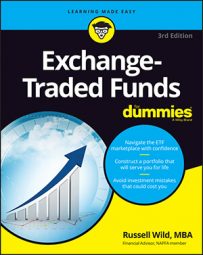Technically speaking, two timber REIT ETFs exist: the Guggenheim Timber ETF (CUT) and the iShares S&P Global Timber & Forestry Index ETF (WOOD). You probably won’t be a big fan of either. They both charge fairly high fees (0.65 and 0.48 percent respectively), but the bigger issue is that they invest only in a handful of timber REITs, simply because there are only a handful of them.
Then, to fill their portfolios (because you can’t have an ETF with two or three holdings), these ETFs also invest in companies that make toilet paper and cardboard boxes and stationery and such. These companies are not “timber” companies. They are simply related to timber . . . not the same thing.
A handful of REITs own timberland — gazillions of acres of trees. The land on which the trees grow tends to rise and fall in value along with the going price for timber. Therefore, these special REITs behave largely as a separate asset class. There are days and weeks when most REITs go one way and timber REITs go another.
For that reason, rather than buy a watered-down ETF, buy individual stocks to tap into this asset class. Two of the largest timber REITs (these two together make up about one-fifth of the holdings of WOOD) are the following:
Plum Creek Timber Company (PCL): 800-254-4961
Rayonier Timber (RYN): 904-357-9155
Keep in mind that these are individual company stocks. Generally, you really shouldn’t invest in individual companies, because individual stocks can be volatile and sometimes awfully capricious. Timber is a small exception, as long as you limit your allocation to absolutely no more than 6 percent of the equity side of your portfolio. Perhaps take that 6 percent and split it between PCL and RYN.
Just like all REITs, timber REITs must distribute 90 percent of their income as dividends. And those dividends will be taxed. Keep your timber REITs, if possible, in a tax-advantaged retirement account. In fact, if you don’t have room for them in your tax-advantaged accounts, you may want to pass.
Timber is good to have in your portfolio for diversification purposes, and the stocks may — knock wood — perform very well moving forward, but these holdings are not essential.

